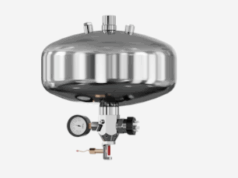Light rays, waves, and wavelets.
A single point of light, which may be present in an extending object, emits light in the form of a train of waves which keep son expanding which is in the shape of spherical and centered about the point of light. However, it is much more convenient to consider the emitting point as emitting fans of rays. where the rays are a straight line and are perpendicular to waves at every point. When a ray of light gets reflected by a mirror or refracted by a lens the divergence of the ray bundle and the curvature of curves both get changed in such a way that the rays are perpendicular to waves at every point. When there is a presence of aberrations, a convergent ray bundle does not get a shrink to a perfect point, which eventually affects the emerging waves and the emerging waves are thus could not form a truly spherical shape. Many optical products manufacturer and optical beamsplitter manufacturer available in the market uses optical polarizers to make the whole manufacturing process quite easy and pocket-friendly.
It’s discovery
In 1690, a Dutch scientist Christiaan Huygens postulated that a wave of light progresses because each point in that wave becomes the center of light wavelet which travels outward in all directions with the speed of light, every new wave behaves as the envelope of all these expanding wavelets. When the wavelets finally reach the region which is outside of the outermost rays of the light beam, all of them gets destroyed because of the phenomena known as mutual interference when a trough of one wavelet falls upon the crest of another wavelet which eventually results in the total absence of any wave or wavelet outside the outermost rays of the light beam.
Normal destruction of one wavelet by another, which serves to restrict the light energy to the region of the rectilinear ray path, which, however, breaks up again when the light beam hits an opaque edge, causing some interference at the edge is it happens cuts off the waves, allowing others to exist, which are slightly isolated in the shadow area.
This whole process is known as diffraction it gives rise to a complicated fine structure at the edges of shadows and in optical images.











